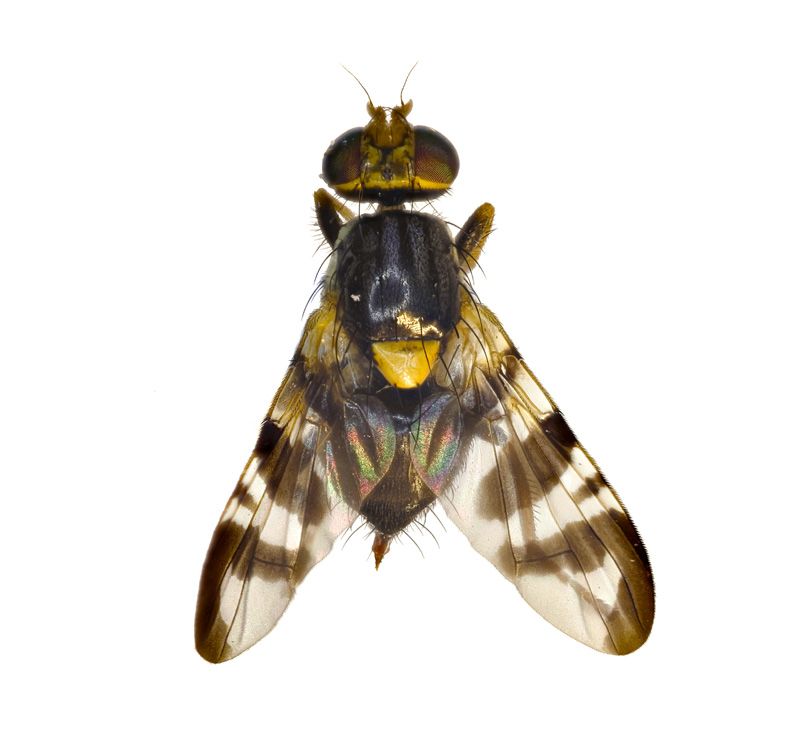
European Cherry Fruit Fly – Rhagoletis cerasi
European Cherry Fruit Fly – Rhagoletis cerasi
Description of Insect:
The European cherry fruit fly (Rhagoletis cerasi) is a highly destructive pest that targets cherry orchards, causing significant agricultural losses. Native to Europe and parts of Asia, this fly is a member of the Tephritidae family, commonly known as cherry fruit flies.
Adult European cherry fruit flies are relatively small, measuring about 3.5 to 5 mm in length. They have a black body with yellow scutellum and legs, and large reddish-green eyes. Their most distinguishing feature is the dark banding pattern on their transparent wings, which helps differentiate them from other fruit fly species.
While the adult flies are harmless, the real damage comes from their larvae, which develop inside ripening cherries. The larvae are small, white maggots that burrow into the fruit, feeding on its flesh. This feeding activity causes the cherries to become soft, discolored, and unmarketable.
Life cycle of European Cherry Fruit Fly
The European cherry fruit fly produces one generation per year. Adult flies typically emerge from late May to early June, coinciding with the ripening of cherries. After mating, females lay their eggs just beneath the skin of developing cherries, usually depositing one egg per fruit. They can lay a total of 30 to 200 eggs during their lifetime.
After one to two weeks, the eggs hatch into larvae, which begin feeding on the cherry’s interior. The larval stage lasts about four to six weeks, during which the maggots consume the fruit’s pulp, causing it to rot from the inside. Once fully developed, the larvae exit the fruit and drop to the ground, burrowing into the soil to pupate.
The pupal stage is the longest phase of their life cycle, lasting 180 days, or sometimes even for 1,2 or 3 winters. The following spring or early summer, adult flies emerge from the soil to repeat the cycle.
Damage they cause:
The European cherry fruit fly is a major agricultural pest, particularly for cherry growers, as its larvae infest and destroy fruit before harvest.
- Agricultural and Economic Impact: The primary economic damage caused by the European cherry fruit fly is the destruction of cherry crops. Infested fruits become soft, discolored, and develop a wrinkled appearance, making them unmarketable. Noticeable brown, rotten spots on cherry fruits are visible, especially when the larva is fully grown. In severe infestations, entire harvests can be lost, resulting in substantial financial losses for farmers.
- Ecological Impact: Although the European cherry fruit fly primarily targets cherries, it also poses a threat to related plant species, like honeysuckle, barberry, and snowberry. The increased use of chemical control methods to combat the fly can impact pollinators and beneficial insects, potentially disturbing the natural balance of local ecosystems.
